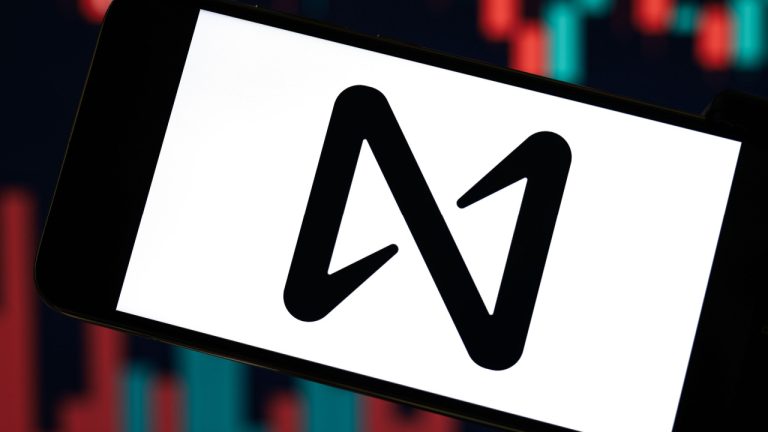
Bitcoin recaptured a key price level and a handful of altcoins look poised to breakout.
The S&P 500 Index soared 5.85% last week, its best performance since November 2022. A large part of the gains were fuelled by expectations that the Federal Reserve will not hike rates anymore.
In comparison, Bitcoin (BTC) had a much muted performance with a rise of approximately 2%. However, a positive sign for cryptocurrency investors is that a risk on sentiment is likely to benefit the crypto space.

Bitcoin’s rise attracted investments in several beaten-down altcoins, which are rising from their long-term slumber. If Bitcoin does not collapse, the recovery may spread to coins that have still not participated in the rise.
Even as Bitcoin enters a range, select altcoins are showing signs of moving higher. Let’s look at the charts of the top-5 cryptocurrencies that may extend their rally in the next few days.
Bitcoin price analysis
Bitcoin continues to trade near the $35,000 resistance and the price action of the past few days has formed an ascending channel pattern. After a sharp rally, a tight ascending channel is generally considered a negative sign.

If the price turns down and skids below the channel, it may tempt several aggressive traders to book profits. That may pull the price to the 20-day exponential moving average ($33,033). A strong rebound off this level will suggest that the bulls remain in command. They will then again try to thrust the price above $36,000 and resume the uptrend.
On the contrary, if the price turns down and breaks below the 20-day EMA, the BTC/USDT pair could plunge to the strong support zone between $32,400 and $31,000. The bulls are expected to defend this zone with all their might because a break below it will tilt the advantage in favor of the bears.

The pair has been gradually rising inside the ascending channel pattern but the negative divergence on the relative strength index (RSI) suggests that the bullish momentum may be weakening. If bulls want to retain control, they will have to kick the price above the channel. If they manage to do that, the pair may rally to $40,000.
Meanwhile, the bears are likely to have other plans. They will try to sink the price below the channel and gain the upper hand. If they are successful, the pair may tumble to $32,400.
Cosmos price analysis
Cosmos (ATOM) rose above the $7.60 resistance on Oct. 30, which completed a double bottom pattern. The bulls successfully defended the breakout level between Nov. 1-3.

Buyers propelled the price above $8.25 on Nov. 5, indicating the resumption of the uptrend. The pattern target from the breakout of the bullish setup is $8.91. This level may act as a barrier but if crossed, the ATOM/USDT pair could run up to $10.
The important support to watch on the downside is $7.60. If bears pull the price below this level, it will suggest aggressive selling at higher levels. The pair may then dump to the 50-day SMA ($7.07).

The 4-hour chart shows that the price rose above the nearby resistance of $8.20, signaling a minor advantage to the buyers. If bulls maintain the price above $8.20, the pair is likely to start the next leg of the up-move to $8.91.
Contrarily, if the price turns down and breaks below the 20-EMA, it will suggest that the markets have rejected the higher levels. That may lead to long liquidation and pull the price to the strong support at $7.60.
Uniswap price analysis
Uniswap (UNI) reached the overhead resistance of $5 on Nov. 2 but the bulls could not overcome the obstacle.

A minor positive in favor of the bulls is that they have not ceded ground to the bears. The moving averages have completed a bullish crossover and the RSI is in the positive zone, indicating that the bulls have the upper hand. If buyers propel the price above $5, the UNI/USDT pair could rise to $6 and thereafter to $6.40.
Contrary to this assumption, if the price turns down from $5, it will suggest that the bears continue to defend the level with vigor. That may pull the price down to the 20-day EMA ($4.36), which remains the key level for the bulls to defend if they want to maintain their advantage.

Buyers maintained the price above the 20-EMA but they could not overcome the roadblock at $5. This indicates that the bears have not given up and are attempting to get back in the game. A break and close below the 20-EMA will further strengthen the bears. The pair may then slump to $4.50.
On the other hand, if the price turns up from the 20-EMA with force, it will indicate that the bulls continue to buy on dips. That increases the likelihood of a break above the overhead resistance of $5. If that happens, the pair may climb to $5.50.
Related: Why is Cardano price up today?
Near Protocol price analysis
Near Protocol (NEAR) has risen sharply in the past few days, indicating that the bulls are attempting a comeback.

The bears mounted a stiff resistance at $1.63 but an encouraging sign was that the bulls did not allow the price to dip below $1.43. This suggests that the buyers were in no hurry to book profits as they anticipated the rally to continue.
If buyers sustain the price above $1.63, the NEAR/USDT pair could climb to $2. The risk to the up-move is the overbought levels on the RSI. This suggests a possible consolidation or correction in the near term. If the price slips below $1.63 the bears will again try to shove the pair below $1.43.

After consolidating in a tight range between $1.43 and $1.59 for some time, the bulls asserted their supremacy and pushed the price higher. The pair could first reach $1.78 and thereafter attempt a rally to $2.
The rising moving averages indicate advantage to buyers but the overbought levels on the RSI suggest that a consolidation or correction is possible in the short term. A drop below the 20-EMA will be the first sign that the bulls are losing their grip. The pair may then drop to the 50-SMA.
Axie Infinity price analysis
Axie Infinity (AXS) has been in a strong recovery phase for the past several days but the bears have not given up and are selling near $6.

The bears tried to tug the price to the 20-day EMA ($5.11) but the bulls purchased the dips below $5.40 as seen from the long tail on the candlesticks. Buyers are trying to resume the uptrend by pushing the price above $6. If they can pull it off, the AXS/USDT pair could start the northward march to $6.55 and subsequently to $7.
If bulls want to prevent the uptrend, they will have to yank the price below the 20-day EMA. The pair then risks a deeper correction to $4.65.

The pair broke above the symmetrical triangle pattern on the 4-hour chart, indicating the resumption of the uptrend. The pair could rise to $6 where the bears may again mount a strong defense.
If the price turns down from this level, the pair may drop to the 20-EMA. A strong bounce off this support will improve the prospects of a rally above $6. The pair may then jump to $6.40. The bears will be back in the driver’s seat if they pull the price below $5.17.
This article does not contain investment advice or recommendations. Every investment and trading move involves risk, and readers should conduct their own research when making a decision.











